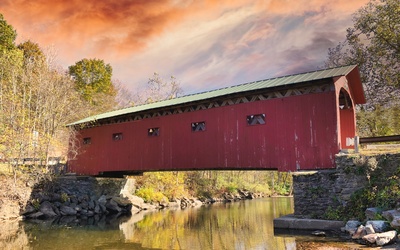Fine Art Photography By: Carolyn Mickulas

Natural Light Photography, what does that even mean? Lately I’ve heard a lot of photographers say “I’m a natural light photographer” and it got me thinking about what this term really means to me and how it’s applied to photography. It sells the idea of authenticity but I suspect it also allows some photographers to work within their comfort zone.
Light....The key ingredient to absolutely everything I do as a photographer. Without light there are no photos. Knowing how to find the light to tell your story - or create it when and where it doesn’t exist - is perhaps the most important element that separates top-tier photographers from the rest of the pack. At some point along the way, I found myself noticing light, it’s color, quality, and direction - sometimes before I even noticed subjects. While “finding the light” might sound like I’m only talking about natural light photographers, the same thing absolutely applies to any studio or location photographer who introduces light into their scenes. When a good photographer has a story to tell they don’t let bad light stand in their way. They know how to create it, shape it, direct it, and conquer it. So, natural light photography is simply to record an image using daylight. This can be direct sunlight, reflected sunlight or ambient sunlight. By using the light already naturally occurring around us we can create and sculpt images that lend a natural feel to what our eyes are used to seeing every day whether we are aware or not. Natural light conditions are actually preferred by most photographers. I don’t think it would be much of a stretch to say that every photographer learns to photograph with natural light first.
But... why stop at natural light? What happens when you don’t have natural light or enough of it at all? Bad weather... then what? I think there are two schools of thought on this. One is, you continue to use whatever light happens to be available and you capture the moment as it happens and hope it comes out. Or two, you create or add light to help you. Having a few lights on hand can save the shoot. My honest opinion is that a photographer should be able to adapt to any situation and still capture an image. Flash is not a dirty word but an unbelievably important tool in enabling me to capture moments that I would otherwise miss. It’s the difference between confidently knowing I am prepared for anything vs. only being prepared to photograph as long as there is daylight. As a photographer I need to be ready for anything. What if it rains and your shoot get’s moved indoors? What if your venue is a ballroom and it is candle lit? What if you want to have portraits taken at dusk but it’s too dark outside to only use natural light? These are just a few of so many reasons why I have needed to learn how to take control of an unfavorable situation. From a client perspective they are trusting me to be professional and to capture their memories no matter what. It’s important to remember while we all have our styles and visions at the end of the day we are at their service. I feel that capturing memories is not merely a stylistic preference but my responsibility. I pursue natural light as much as possible, I love it! And I also love to add light when needed. In short, I am a photographer of light, natural or artificial, they are both tools and without them we would not have a photograph.
Of course, some won't agree. And that's okay with me!